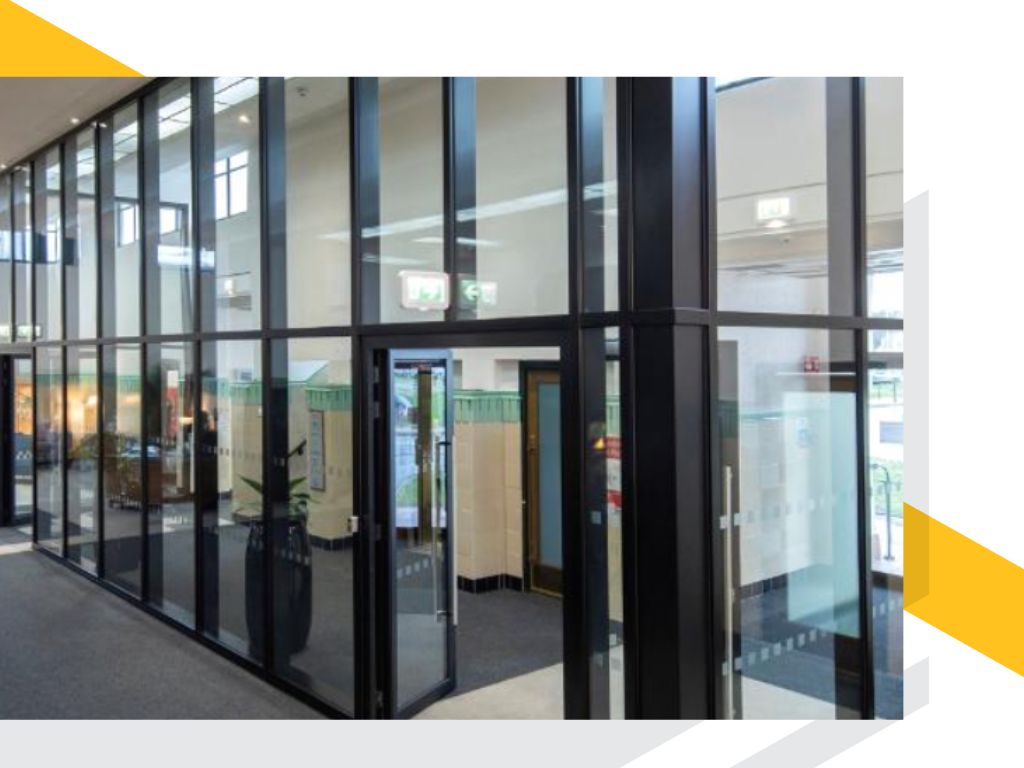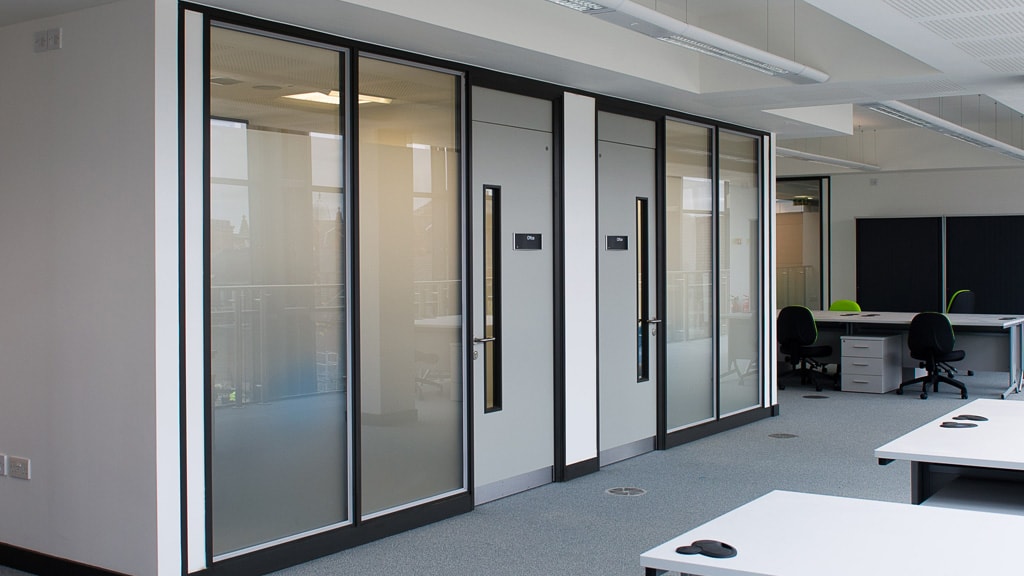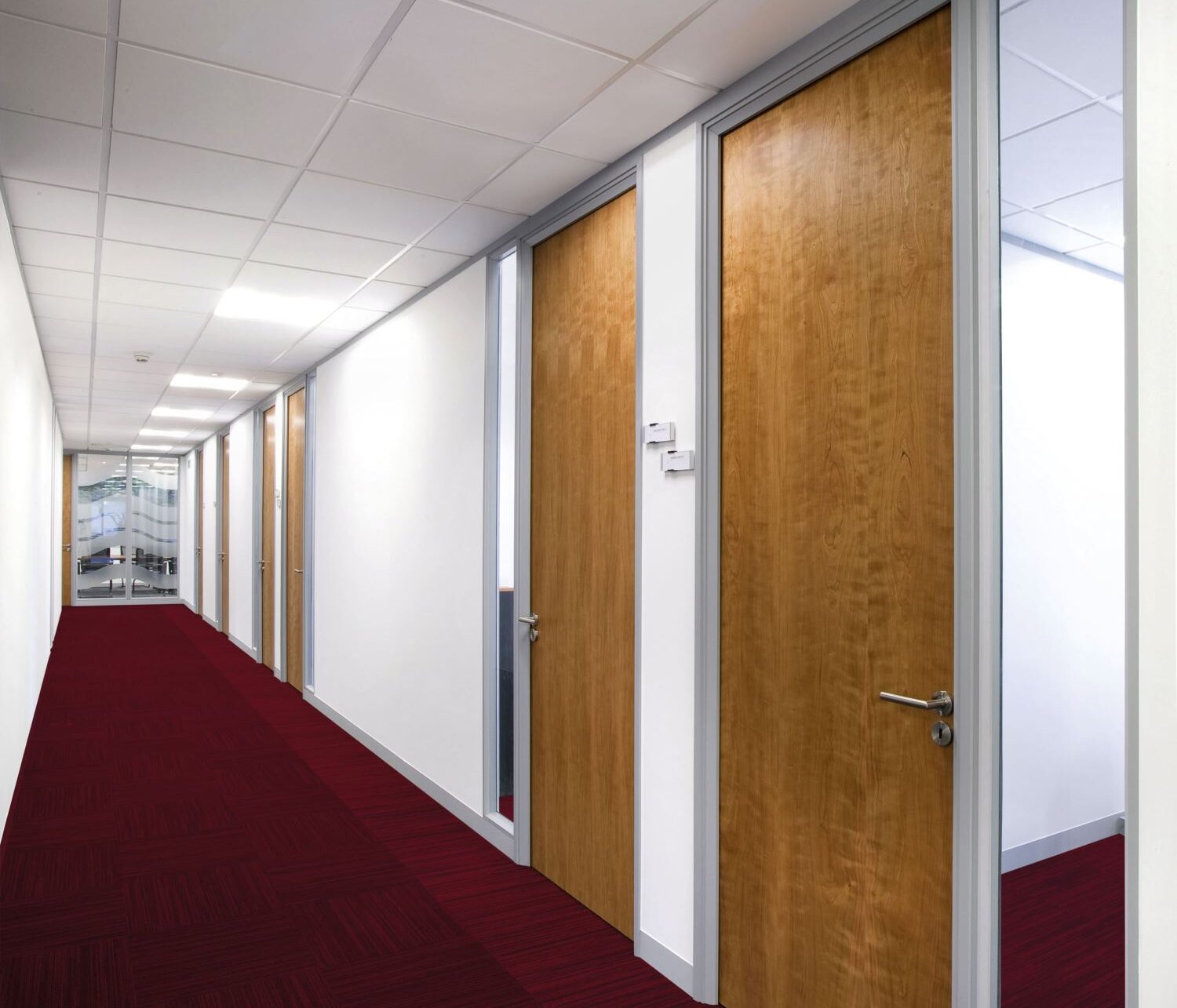Disclaimer: Please note that this is general advice for fire door care, and responsibility for the maintenance of your fire door lies with your installer.
What are fire doors?
A fire door is a specialist door purposely designed to withstand a fire for as long as possible, such as 30 minutes or more. They are produced and tested against a range of elements, and aim to strategically compartmentalise a fire and the smoke it produces. They are required by law in commercial buildings, and in many domestic settings too.
What are the benefits of a fire door?
Slow the spread
Fire doors are fitted with an automatic door closer, and often retainers that are linked to the fire alarm system in a way that closes all doors if a fire is detected. The production of the fire door makes it resistant to fires for a certain amount of time, therefore slowing its spread, and making all the difference to lives and to buildings if the worst happens.
Protect the fire escapes
Strategic placement of fire doors can increase the chance of everyone in the building being able to exit to safety, by containing the fire (depending on where it started) for long enough to allow evacuation.
Security
Outside of the event of a fire, a fire door can offer additional security, by being harder for criminals to access when locked thanks to the robust and heavy production materials used.
Durability
They’re built to withstand fires, so it makes sense that fire doors can withstand frequent daily use too, retaining their good looks and functionality for years to come.
Soundproofing
Commercial properties and blocks of flats alike can feature their fair share of noise, and a happy byproduct of fire door production is that they reduce noise too; their heavy, dense composition makes for good soundproofing.

How often should fire doors be inspected?
A fire door should be regularly inspected to ensure they’re still able to slow the spread of a fire if it comes to it. Their efficacy relies on a door in good condition to do their job correctly, so a fire door inspection is required at least once every six months, regardless of where it is. Any small alteration to the door can impact its performance.
From January 2023, it became a legal requirement to inspect the fire doors in communal areas of multi-occupied buildings measuring over 11 metres in height every three months.
Who is responsible for maintaining fire door safety?
In short, whoever owns or is responsible for the day-to-day management of a domestic or commercial property is responsible for maintaining the fire doors within it.
Fire door safety and the law
Due to the instrumental part fire doors play in protecting human lives, there are, of course, strict laws around their production and their use. The Fire Safety (England) Regulations 2022 sets out the law around fire door safety, including when they should be inspected, how fire door defects should be dealt with, and where fire doors should feature in your building’s fire risk assessment.
Fire door certification
In order to be sure of a fire door’s efficacy in the event of a fire, third party certification should be sought by any supplier of fire doors. This is so that the person responsible for it once it’s fitted can receive a certificate assuring them of its fire rating, and that it’s up to standard in a fire test.
What does the fire door inspection process include?
The fire door inspection process starts on installation day, and then at regular intervals throughout the life of the fire door. The comprehensive fire door inspection checklist should include checks of the following:
- The materials used in the installation of the door
- The condition of the fire door frame
- The condition of the door leaf
- The fitting, condition, operation and fire-resistant qualities of the hinges and hardware
- The condition and operation of devices that hold the door open
- The condition, operation and efficacy of door closing devices
- Relevant markings, such as the fire rating of the door
- The condition and operation of the latches and locks
- The gaps between the leaf and frame, which includes the threshold
- The condition of vision panels and glazing
- The condition and operation of cold smoke seals
- The condition and operation of the intumescent strips
- The thickness of the door
- The fire door signage

What’s involved in fire door maintenance?
There are several different elements of your fire door that you should pay attention to when it comes to its maintenance. These are:
Door frames
If the door frame is damaged, it could compromise the performance of the fire door when it counts, so inspect the door frame and rectify damage ASAP.
Door seals
Gaps around your fire door should be between 2mm and 4mm; any larger and fire and smoke could get through. Use a gap gauge to ensure any gaps are within these regulations, and while you’re there, ensure that the intumescent strips are in good condition too (these trap smoke and fire).
Glass glazing
The glazing is an important part of the fire door – it allows visibility and light, but also should keep fire and smoke at bay along with the rest of the door. Ensure that any glazing stays intact, and is cleaned with products that don’t affect its integrity or visibility.
Opening and closing mechanisms
At least three hinges should be attached to the door, and these should be CE marked and fire rated, with their screws intact. The door closer should be in good working order, and any door retainer should release when the fire alarm sounds.
Fire door markings
The markings on a fire door should clearly indicate whether a fire door should be kept closed, or kept open. This will depend on whether the door has a door closer fitted, a fire door holder, or a swing-free mechanism.
If you’re responsible for the fire doors in your building, it’s essential to seek professional help with maintaining them, to ensure that they stay within regulation and do their job in the event of a fire.
The 5 most common fire door problems
Don’t get caught out by these common fire door mistakes:
Poor fire door records
The installation and subsequent inspection records of fire doors is essential to keep for anyone responsible for their building’s fire doors, to prove every precaution has been taken to protect lives.
Incorrect or missing labelling
Incorrect labelling can result in the doors not being used as they should be, which make them ineffective or even redundant in the event of a fire.
Poor structural fitting
A door that is badly fitted from the off is going to create space through which fire and smoke can creep.
Mechanism and seal problems
Again, defects that aren’t attended to can compromise a fire door, making them unreliable if a fire starts in the building.
Overall structural integrity
The composition of a fire door has been carefully and scientifically decided upon, so at the first sign of something structurally unsound about the door, you should seek professional advice for speedy rectification.

Why choose Komfort for your fire door requirements?
As a trusted partitioning manufacturer, the installation of Komfort’s popular office partitions often calls for fire door expertise too. We’re proud to supply fire doors rated up to 90 minutes, which are independently tested to BS and EN standards, and can be installed by our trusted 3rd-party accredited teams.
With over 50 years in the business, our design-led team can offer practical advice around fire doors to make your vision come to life, without compromise on safety.
Frequently Asked Questions
Fire doors come in a variety of ‘ratings’, which means the amount of time they should hold off fire and smoke for. You can determine what rating a fire door is by looking for the letters ‘FD’ followed by a number (30, 60, 120 or 240), which is the number of minutes they’ll maintain structural integrity in the event of a fire.
Providing all elements of the fire door work as they should, there isn’t a set time frame for fire door replacement, unless regulations change and your doors are no longer compliant.
Whilst fire doors need to be able to close completely on their own, they don’t need to slam, so if your fire door is doing that, an adjustment can be made to the automatic closer to slow it down. Seek help from a professional fire door contractor if this is something you want to pursue.
You should never, ever wedge a fire door open – it won’t be able to close and do its job in the event of a fire. Instead, if you want to hold a fire door open, invest in a door retainer linked to the fire alarm, so that it can be released if necessary.
No – the installation of a fire door must be done by an expert to ensure it works as it should.
Komfort can supply fire doors that maintain structural integrity in the event of a fire for up to 90 minutes.
Improving air circulation when there isn’t a fire opens up an opportunity for flames and smoke when there is; do not, under any circumstances, trim or alter your fire door.
Fire doors can be composed of a combination of timber, steel, gypsum, and aluminium, plus fire rated glass.

